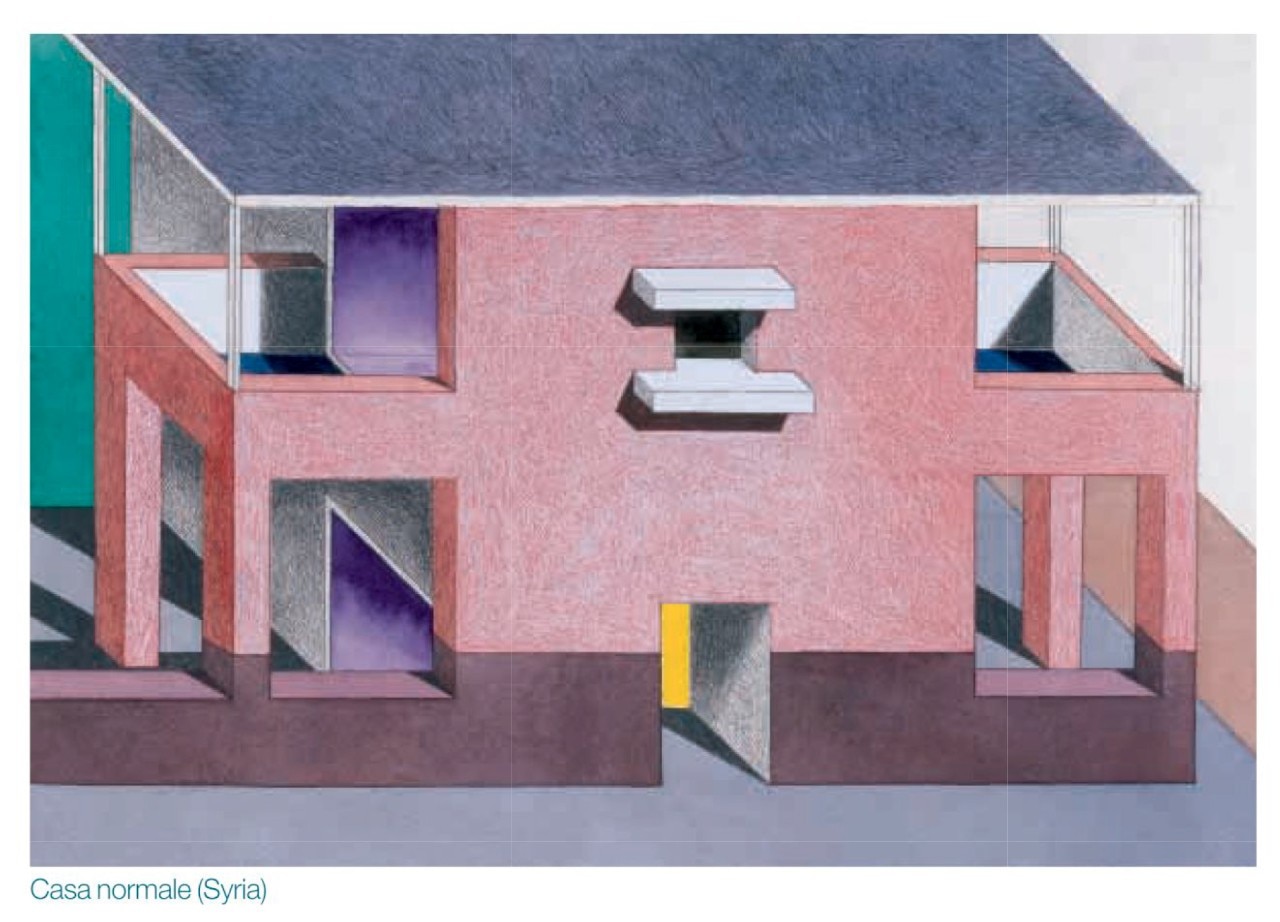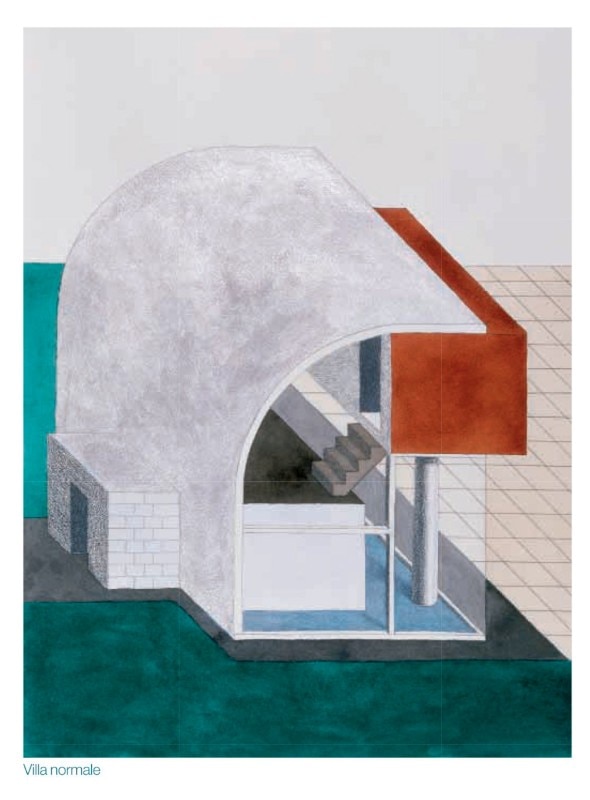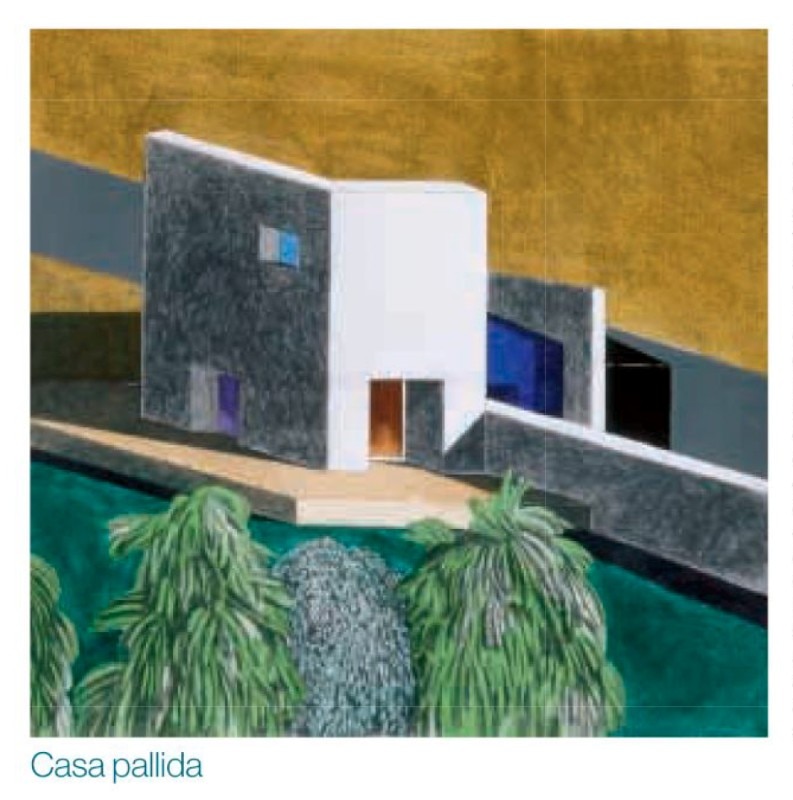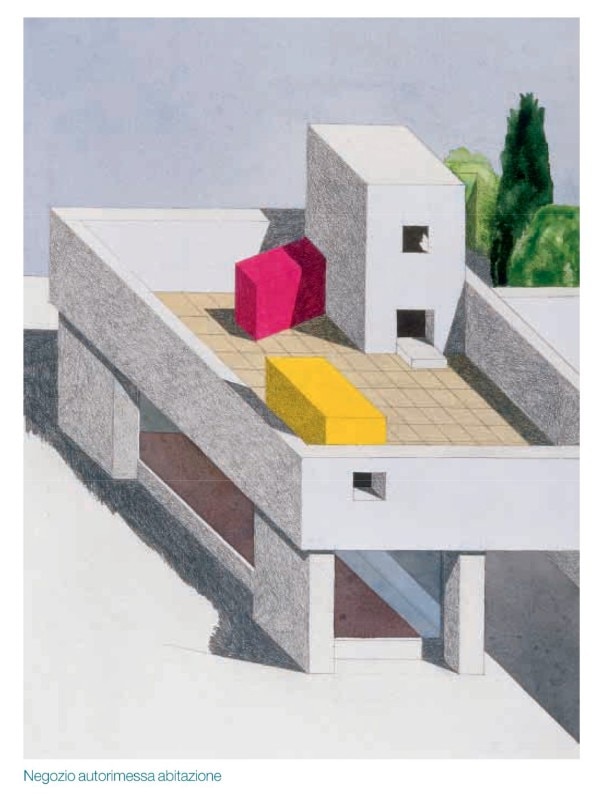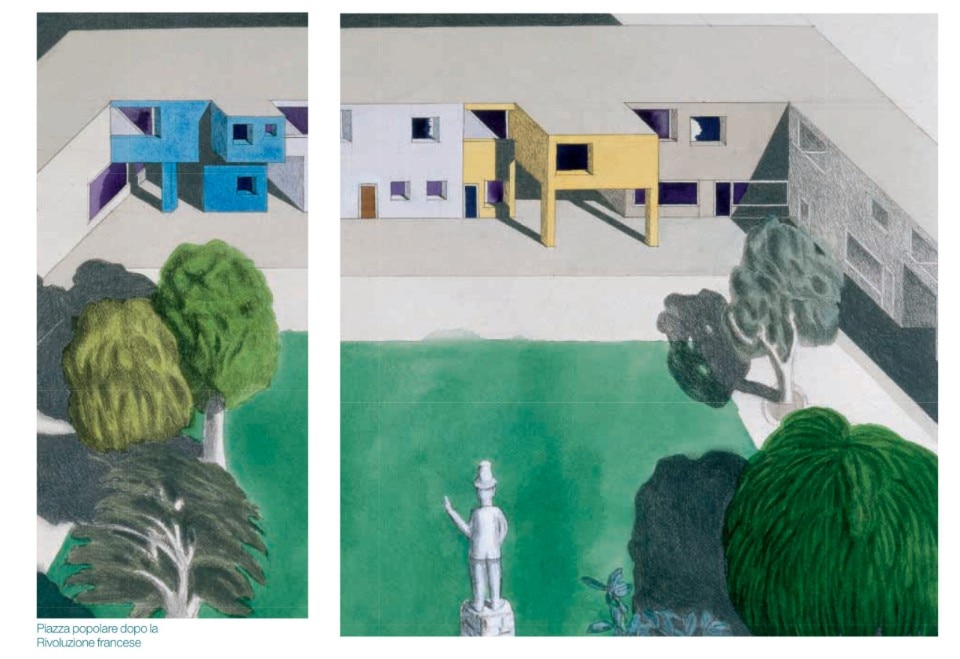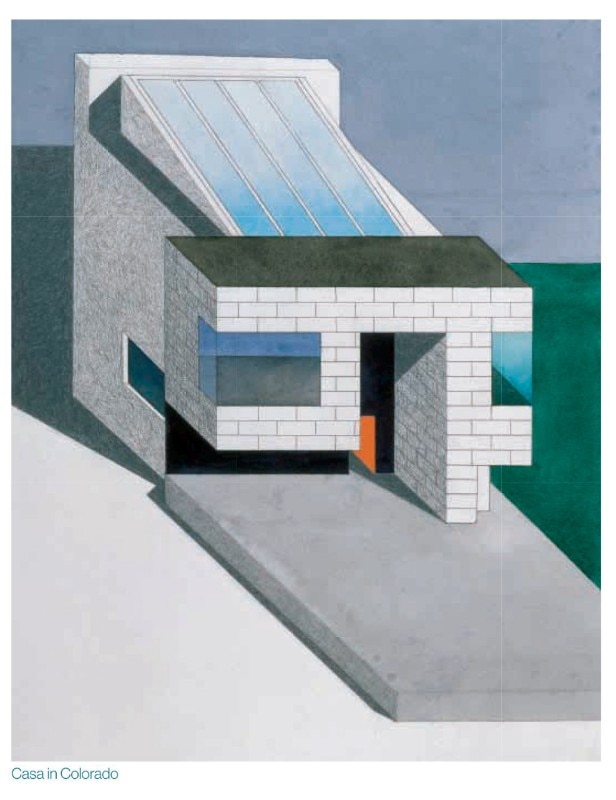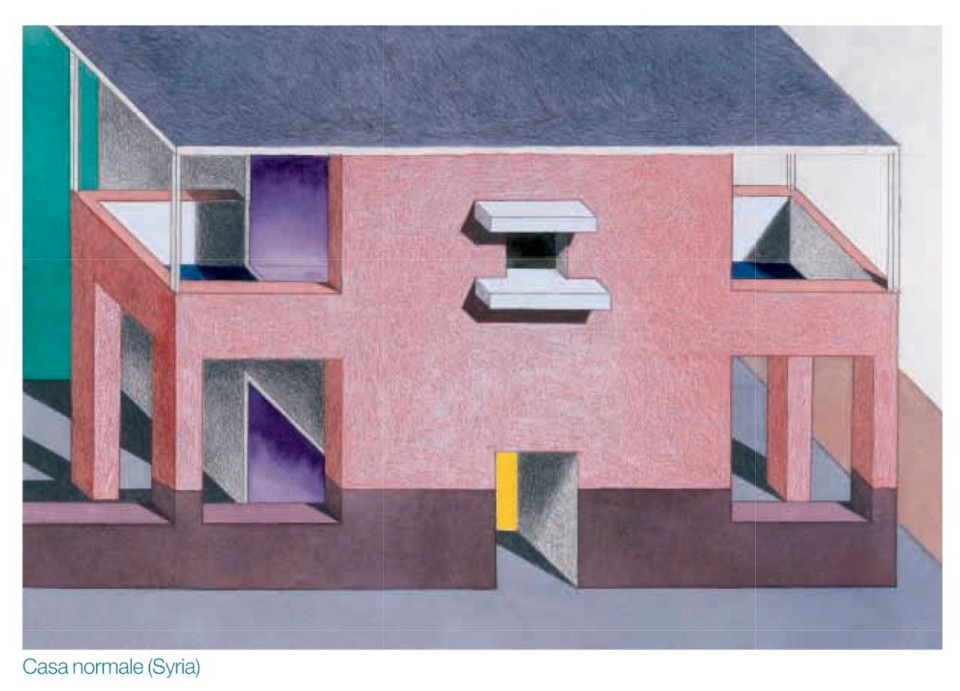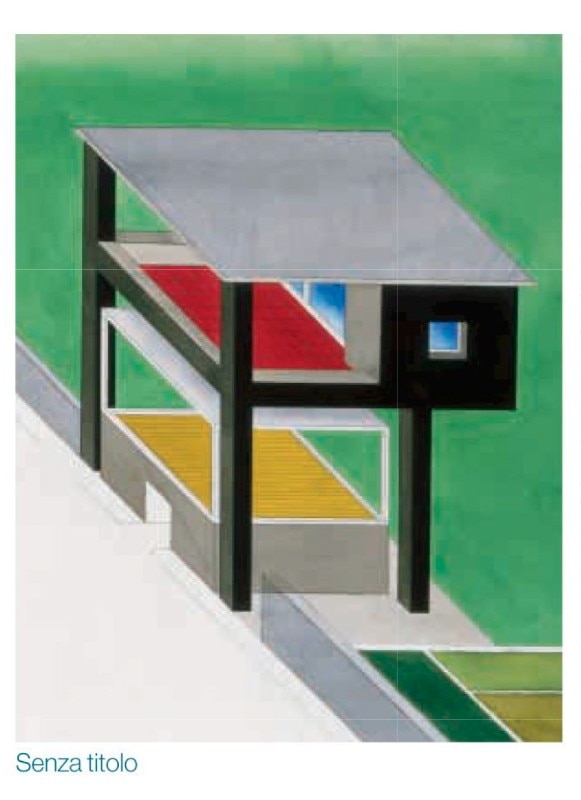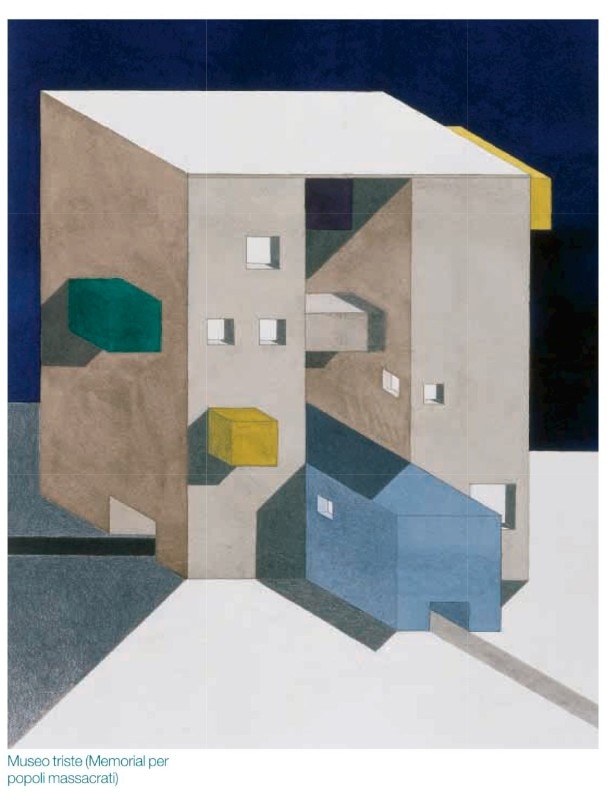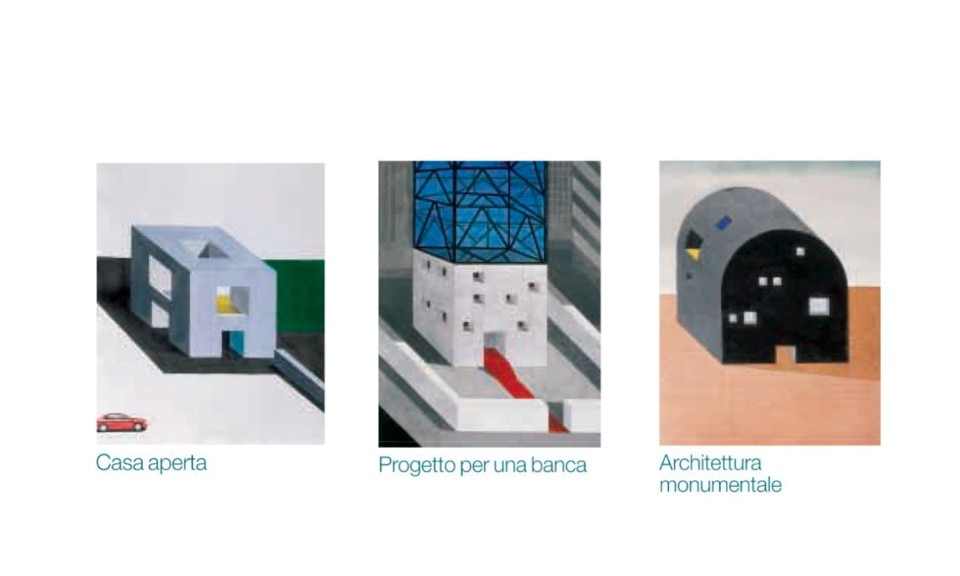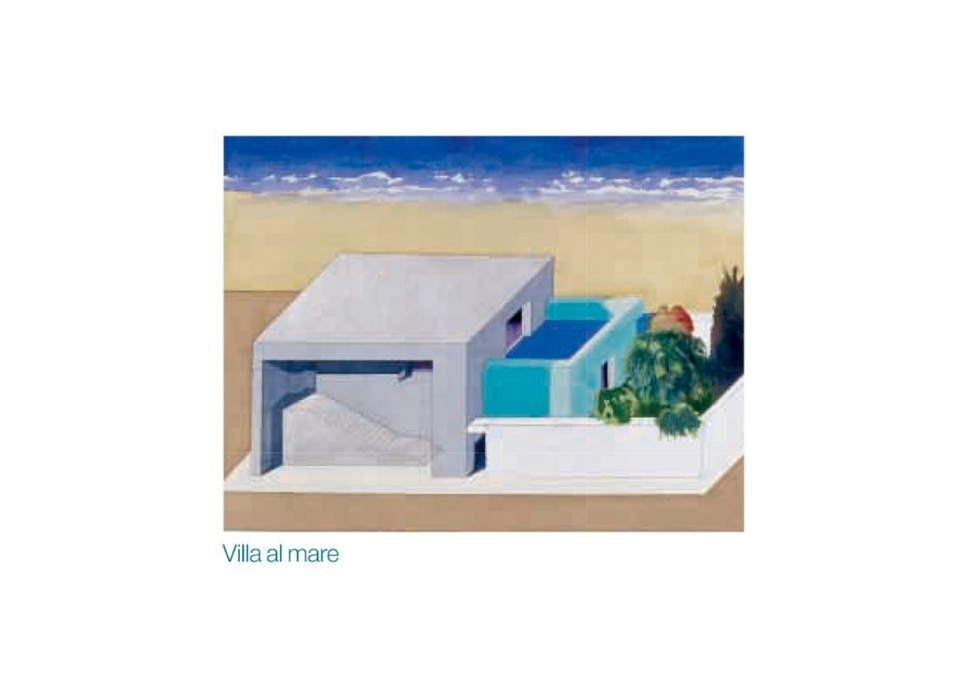This article was originally published on Domus 859, may 2003.
Drawings are important to Ettore Sottsass. He never stops making them, in his carefully organized sketch pads, with his specially chosen paper, his mix of strong, definite line, splashes of vivid colour and combination of observation with imagination. Sottsass drawings are both working tools, and also made for their own sake. There are studies for the objects that he is working on, lamps, tables, vases, houses, interiors, and sometimes people. For the past year he has been engaged on something a little different, a series of architectural drawings that reflect his special preoccupation with the subject.
Sottsass does build of course. He is responsible for a series of houses large and small from Singapore to Colorado. And there have been various retail projects as well as a design for a factory in Russia that was exhibited at the Venice Architecture Biennale last year. But these drawings have a more polemical intent. They show a range of different building types, a museum, public housing, a bank, among others that while they have the characteristics of Sottsass’ realized architecture, have a purpose that goes beyond the strictly practical.
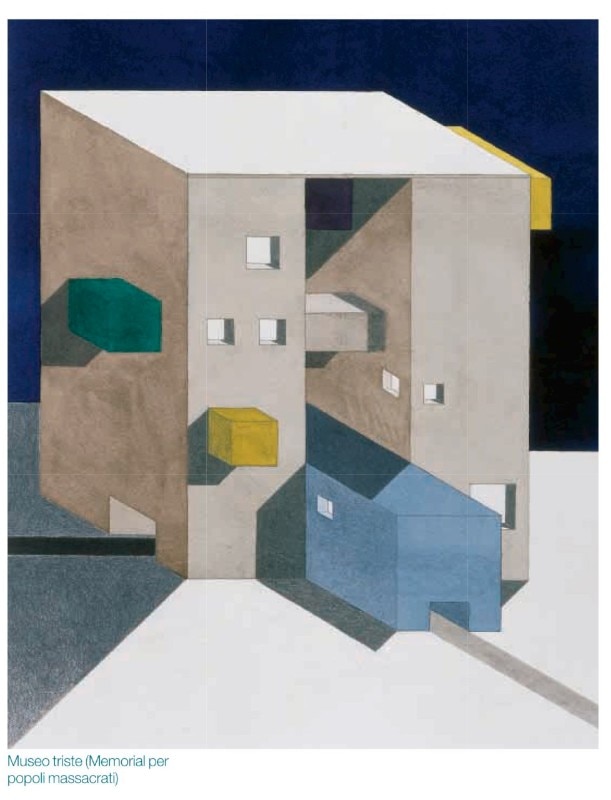
Sottsass calls them “a love letter to architecture, although I didn’t know where to send it”. “I always make my drawings at night, when your body and feelings are more vulnerable.” They show something about Sottsass’ view of the world. Sardonic, with a certain taste for melancholy. The drawings have provocative titles that suggest that architecture can sometimes have a literary of political meaning rather than a formal one. One is called “The Sad Museum”, which Sottsass describes as “a place for the memories of massacred people”. Another one is titled “Social Housing With Piazza” which Sottsass drew in evocation for the poor in Paris after the French revolution, as a kind of Pugin like contrast between the generosity of spirit that was once possible, but which is much harder to find now.
Sottsass is an architect of course, and the son of an architect, but while he has been at the centre of the development of contemporary design, his architecture has been much more personal.
For me the real destiny of architecture is on the inside, where only the people who live in it can experience it. From the outside, you just get to look. Inside architecture affects your body in a physical way, that is architecture to me.
He has the same books that other architects have on his shelves. He has been everywhere, to the same places that other architects have been; George Nelson’s beach house, and Le Corbusier’s Unité d’Habitation, and found the later moving “there is a certain dignity there, it’s horrible in a way of course, but at least all the people who live there are volunteers now”. But in truth he draws different lessons, and is interested in different things. “Gropius and the others saw architecture as a kind of structure, like Foster does now. But Le Corbusier very much had an idea of the importance of the sensual, of making a sensual wall. “The places I like most are the private, the ordinary, what you might call family architecture”. “For me the real destiny of architecture is on the inside, where only the people who live in it can experience it. From the outside, you just get to look. Inside architecture affects your body in a physical way, that is architecture to me”.
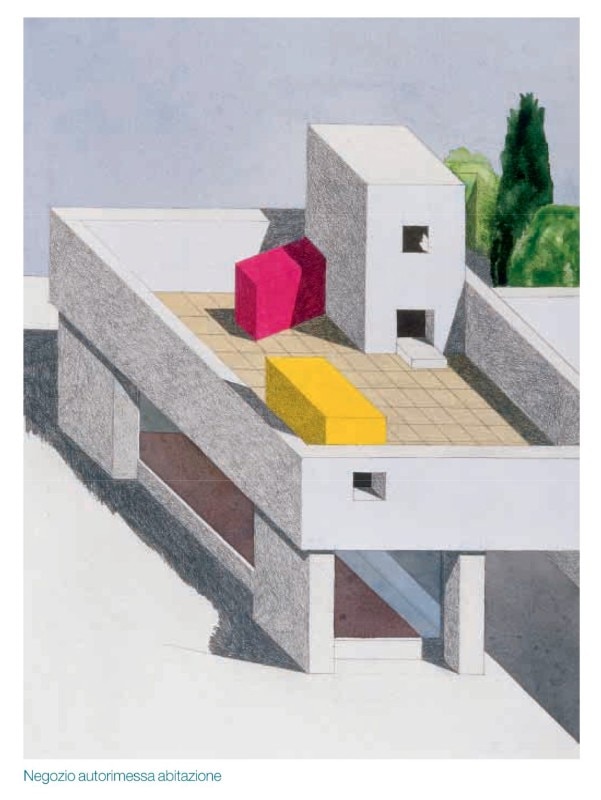
Sottsass is neither a modernist, nor a post-modernist. He is interested in the things that shape architecture underneath the surface, and which, he believes, remain remarkably constant throughout history. The project he is working on currently for a villa in Doha for example, where the overall architect Arata Isozaki has brought together a collection of architects from around the world to work on parts of the building, is not so different from the house a wealthy ruler might have built in ancient Rome, or earlier still in Mesopotamia. The conventional view would be to suggest that this makes it an irrelevance to the architectural concerns of the present.
But for Sottsass, worthwhile architecture has always been about the same things. “The problem is not the connection with power that architects have to make, but with what kind of power the architect is connected. Cathedrals and pyramids showed the use of power in an attempt to hold back the darkness of death”. And the techniques of architecture, as opposed to the technology do not change much either. For Sottsass, it’s the paths that are cut through buildings, the transition from a dark corridor entrance to the sun filled courtyard of an ancient mosque in Cairo, or a simple Indian village house, that offer the most powerful lessons. Sottsass’s drawings show a lifetime spent looking at architecture, and learning those lessons. Filtered through his own sensibility he concentrates on the universal qualities that emerge from them.


